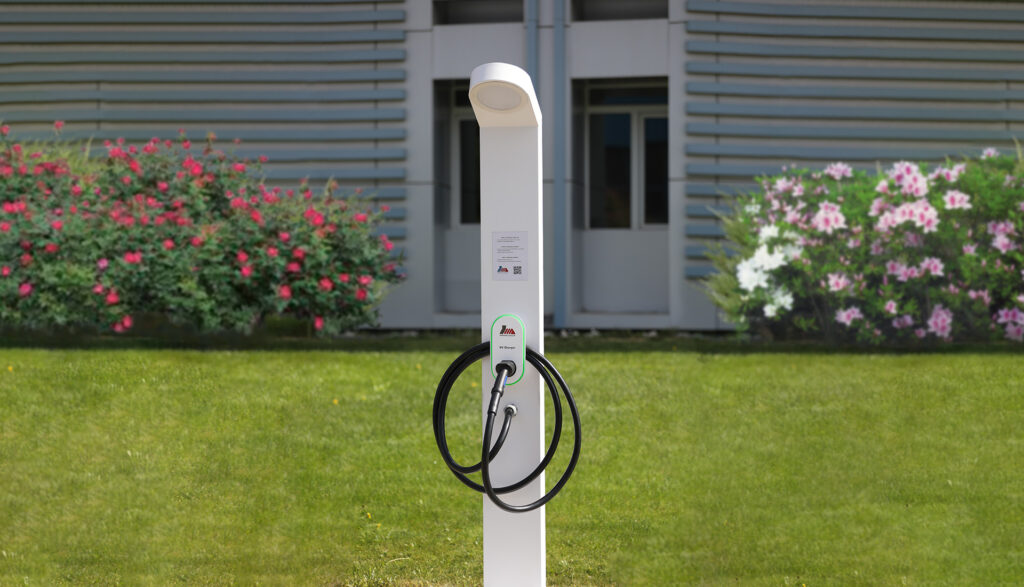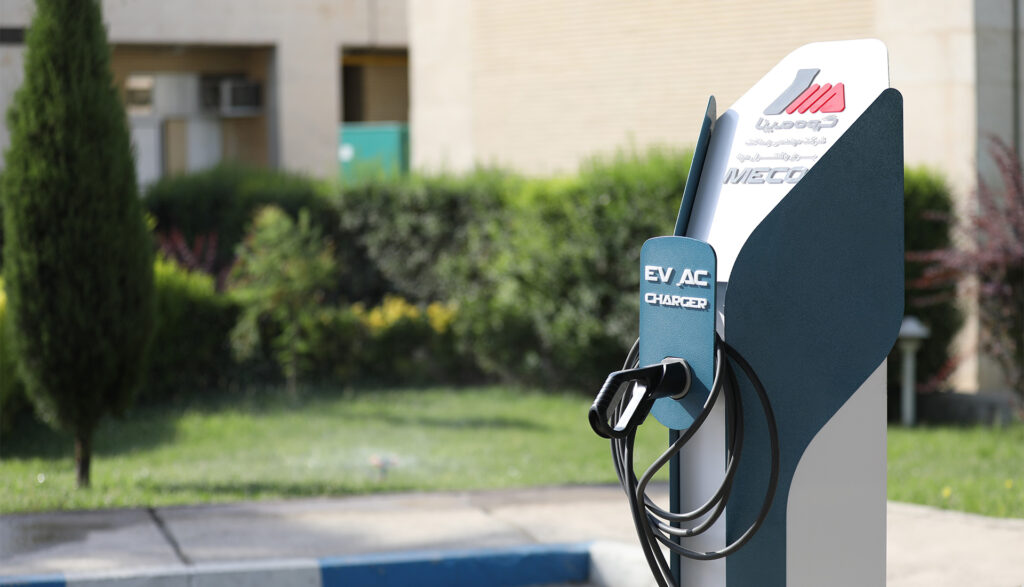Features
Transport Fleet Electrification: MAPNA’s solution to save energy, curb pollution
In addressing the challenge of energy sustainability and quality of life, transportation is a key area as heavy fossil fuel consumption by vehicles and its consequent energy waste and air pollution has turned into a major cause of concern.
The world’s fossil fuel resources are depleting and we have no option but to come up with alternative plans for the future. Besides, pollution caused by these resources has posed serious challenges to human life. Today, around 75%-85% of air pollution in metropolitan areas is caused by vehicles. Consequently, the number of days that sensitive groups need to stay home is increasing in metropolitan areas.
Replacing fossil fuels by green energies in urban transportation systems is considered as a key move toward solving this problem. That means, together with improvements in public transport infrastructure, electric vehicles (EVs) will help us envisage emission-free urban transportation with considerable amounts of natural fuel saved.
Iran has over 80,000 megawatts of electricity capacity; in addition, about 19,000 megawatts of power plants are under construction to meet the country’s peak demands. Of this, a considerable volume (8,500 MW) remains idle during off-peak months.
The country’s vast power grid can be used to optimize the existing electric infrastructure and yield multi-faceted results: It can be used in transportation to not only create jobs, but also to prevent part of the installed capacity of the power plant from downing their shutters.
Moreover, with the electrification of vehicles such as cars, buses, motorcycles, and trains, part of the transportation needs can be met by power plants, resulting in the reduction of energy subsidies. In other words, we can convert natural gas into electricity in high-efficiency combined-cycle power plants, and then inject them into the transportation fleet.


Electrification: Key to Energy Subsidy Cut
Huge fossil fuel subsidies in Iran have turned into a major challenge for policymakers. Based on available data, about 25% of the country’s fossil fuel is burnt in the transportation sector.
According to the International Energy Agency, Iran was the largest fossil fuel subsidizer in 2018 with $69.2 billion on fossil energy consumption subsidies.
In 2018, Iran’s subsidies for natural gas consumption were at $26 billion, fossil-fueled electricity at $16.58 billion and oil at $26.57 billion.
Economy Ministry’s reports indicate that the country’s annual energy subsidies are double the total fiscal budget. Hence, improving consumption patterns could lead to huge benefits for the country’s economy.
According to a study by the Joint Research Centre of the European Commission, using all-electric and hybrid vehicles saves about 30% of “well-to-wheel” energy consumption, depending on how the electricity and power plants’ primary fuel are supplied. Therefore, the modification of urban transportation fleet will result in reducing pollutants and subsidies, increasing fuel exports as well as job opportunities.
Car electrification can also help the household economy, as covering the same distance with gasoline-powered cars in Iran costs 10 times more than filling up EV batteries.
Legal Requirements for Electrification of Vehicles
In recent years, following a government policy to shift from fossil fuels to green energies, MAPNA Group has prioritized the development of EV infrastructure.
The Iranian government passed a 35-article Clean Air Act in 2017 as an integrated approach to curb air pollution, with a focus on major cities with populations of over 200,000 people.
The act tasks different administrations, including the Department of Environment, the Ministry of Interior and Tehran Municipality, with specific actions in line with the objective.
It singles out inefficient vehicles, substandard fuels, industrial activities and dust storms as the major sources of air pollution in the country.
The act also proposes more frequent technical inspections of private vehicles.
According to the law, the production of highly-polluting, carburetor-equipped motorcycles is banned, urging people to opt for eco-friendly electric motorbikes.
The act also stipulates that the issuance of some business licenses is subject to the use of electric transportation.
The move is expected to help alleviate the problem, but a lot more needs to be done to effectively address the worsening problem.
Establishing EV Infrastructural Needs
Despite their increasing popularity worldwide, EVs are still a novel concept in Iran’s huge car market.
While EVs can be powered up at home, industry analysts and academics believe that a fast-charging infrastructure is essential to getting beyond their current limited adoption.
In this regard, MAPNA Group opened Iran’s first electric vehicle charging station at Tehran’s iconic Milad Tower in May 2019.
Built over 700 square meters, the station in the northwest of the capital includes a 43-kilovolt alternating current (AC) charger plus a fast charger working under the Chademo Protocol, a trade name of a quick charging method for electric vehicles which suits Japanese and Korean EVs such as KIA, Nissan, and Mitsubishi.
The station also includes a 4.7-kv slow charger as well as a 5.5-kv charger, which can be used by electric motorcycles.
Moreover, MAPNA Group has signed a contract with the Municipality of Mashhad for the electrification of the northeastern city’s transportation system. Accordingly, MAPNA Electric & Control Engineering & Manufacturing Company (MECO) is tasked with electrification of one diesel bus unit, conducting feasibility studies for electrification of the city’s BRT (bus rapid transit) system, and construction of three electric vehicle charging stations.
MAPNA is also planning to carry out feasibility studies for the electrification of transportation fleets of Kish Island, southern Iran.
The Group has signed an agreement with Oghab Afshan Manufacturing Co (Scania) for development of electric buses for the electrification of the central city of Semnan’s urban transportation fleet.
Steps for EV Production
The lack of financial resources to import electric vehicles has highlighted the importance of localization of such technologies. Aware of this need, MAPNA Group began its initial feasibility studies in the early 2010s, finally gearing up to jointly produce EVs with the two major Iranian automakers, namely SAIPA and Iran Khodro (IKCO).
MAPNA forged its first agreement with SAIPA in February 2019 to develop and commercialize electric vehicles in the hope of reducing fossil fuel consumption and curbing air pollution in megacities.
In August 2020, IKCO also expressed interest in joining hands with MAPNA to mass produce electric vehicles.
Underlining the necessity of serious and hard work for manufacturing electronic vehicles in Iran, MAPNA CEO, Abbas Aliabadi, has announced that even if the domestic automakers show reluctance, the conglomerate will continue to tread the path it has embarked on.
MAPNA Group signed a memorandum of understanding with the Ministry of Roads and Urban Development in March 2020 to construct a 510-km electric railway, linking Ahvaz, center of the southwestern Khuzestan Province, and the central city of Isfahan. The railway will mainly run through mountainous areas.
With electrification widely considered as an attractive solution for reducing the oil dependency and environmental impact of road transportation, switching to electrified road transport under the sustainable shared socioeconomic pathways gives us an optimistic outlook for a low-carbon transition. MAPNA, a leading industrial player in Iran, has well demonstrated its innovative strategies to realize the country’s electrification goals as part of its environmental, economic and social responsibilities.